The Desert House – or The Joshua Tree House as it’s been called – is owned by Jay Doolittle, who started building the house in 1987 with his wife, Bev. Completed in 1993, this 4,643 square foot modern estate tucked away in Joshua Tree has been carefully designed, elaborated upon, crafted and finessed for 27 years and is now on the market for the first time.
Desert House by Ken Kellogg






The 3 bedroom 3.5 bathroom home, situated on 10 acres, blends in with the environment and has all the hallmarks of architect Kendrick Bangs Kellogg’s organic modern design (best known in Palm Springs for the now-demolished Chart House restaurant in Rancho Mirage). The exoskeletal-like home sits atop a heap of boulders at the edge of Joshua Tree National Park and has amazing views of the surrounding desert and carefully protected preserve.




The pathway to the front entrance is steep and paved in natural stone, as is much of the floor on the interior — which could be likened to a group of freestanding concrete trees with lots of air between them.



Technically, these “trees” are 26 concrete piers, each supported by bedrock beneath the house. Windows set at unconventional angles fill in the irregular gaps between the twisting columns while letting in plenty of natural light. Rising from the floor, the windows continue without interruption into the ceiling.



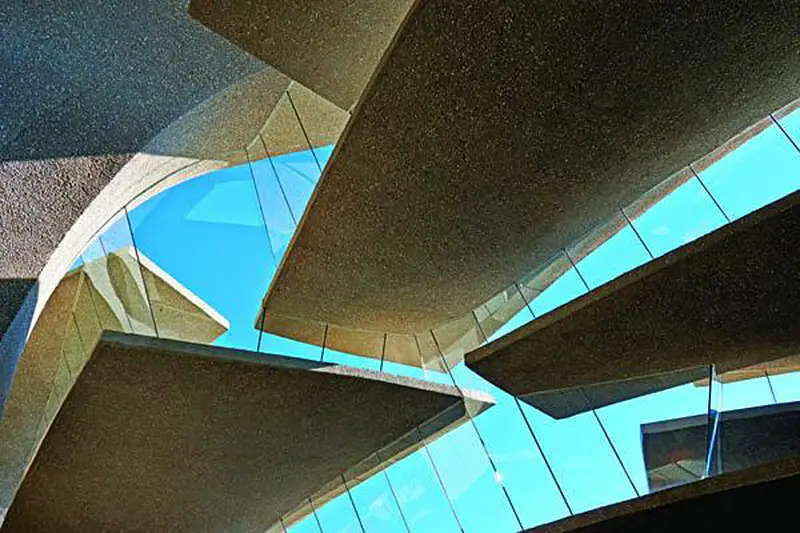
Bev Doolittle told Palm Springs Life that she thinks Kellogg was attracted to the Joshua Tree location because he “wanted to play in a rock pile.” Kellogg says he likes challenges. “I’m looking for a natural site that is unusual and inspires an unusual solution. The whole idea of organic architecture is that you leave the site better off than you found it.”



Design was a slow and methodical process. The terrain was so irregular that Kellogg commissioned aerial photography and had new topographic maps prepared. After building a three-dimensional version of the map in Styrofoam, the architect went back and forth between the site — tape measure in hand — and the model. “It took me three months to come up with the idea,” he says.
The home has interior and exterior waterfalls, ponds and a spa but no swimming pool.




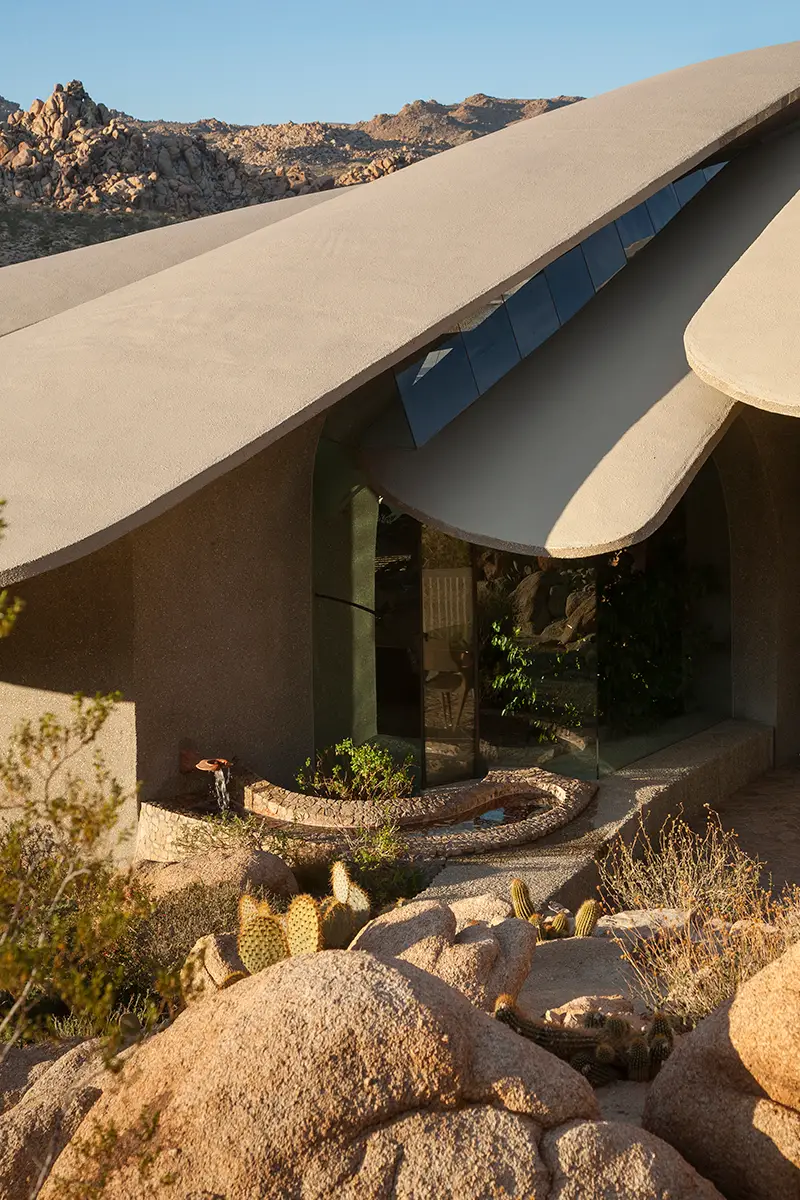


With interior design by John Vugrin, the cavernous interior is filled with organic forms and shapes throughout. Curving built-ins and seemingly amorphous shapes all add to the functionality of the unusual home.

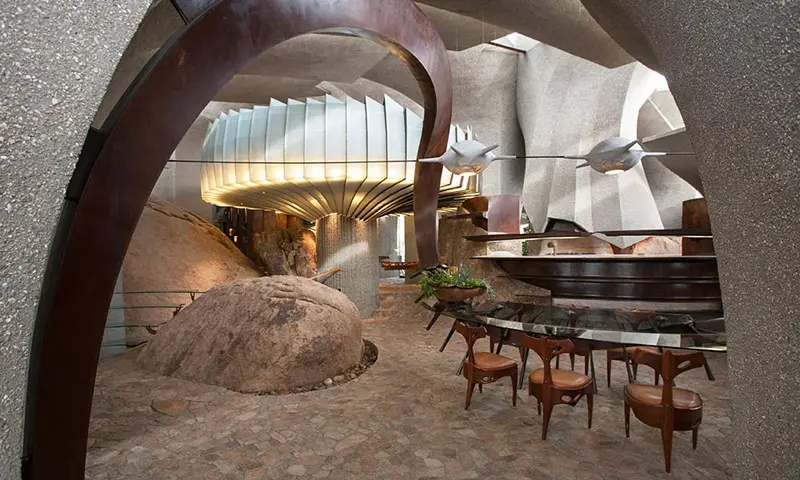

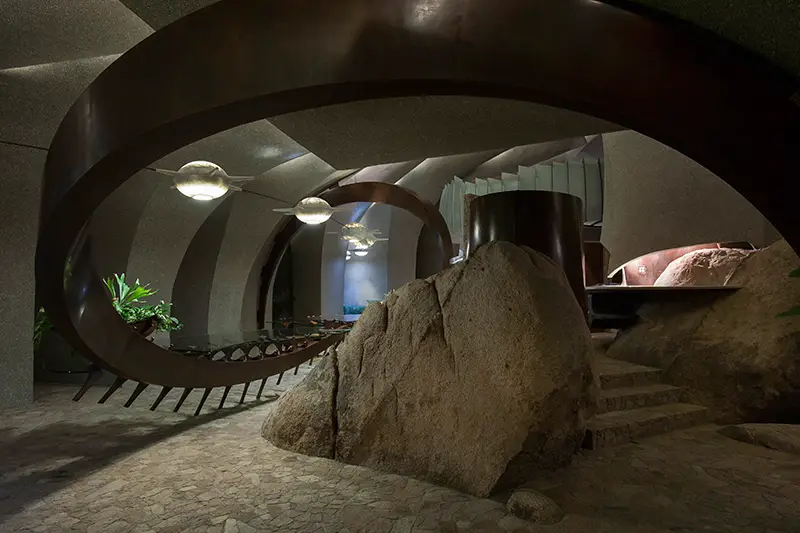
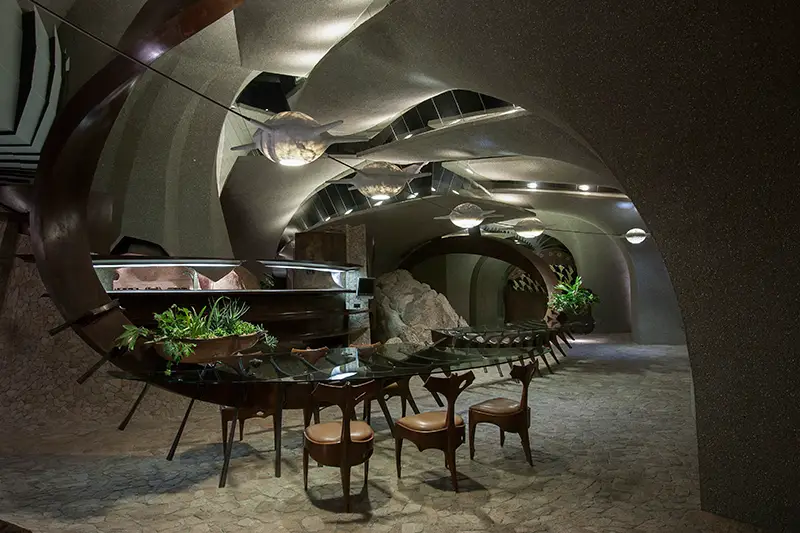

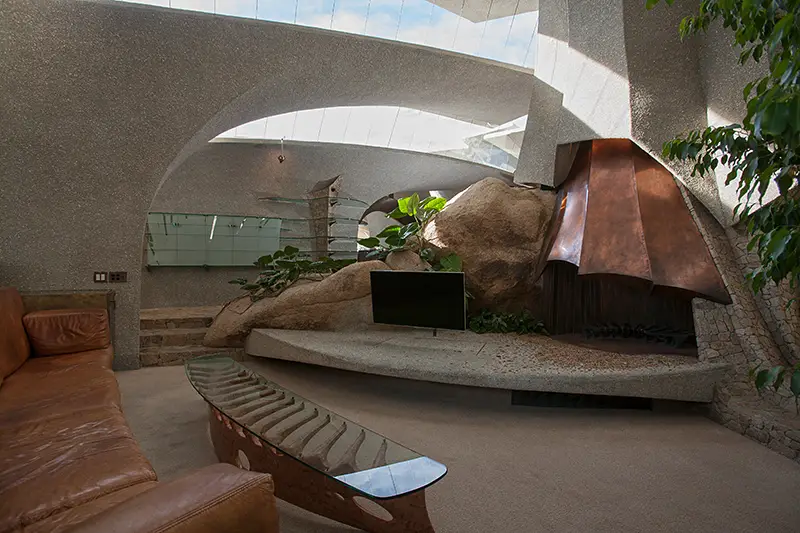
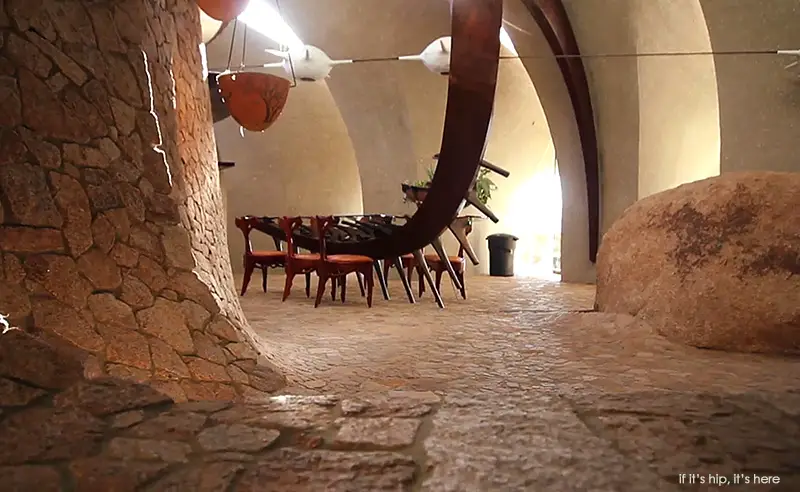


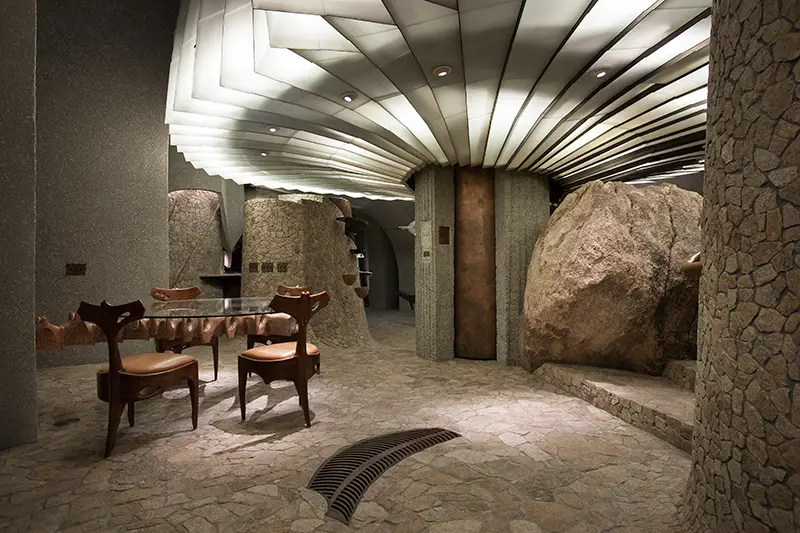



Intricate metal work can be found everywhere from the entrance gates and railings to the interior details such as floor grates, headboards and fireplace hood.

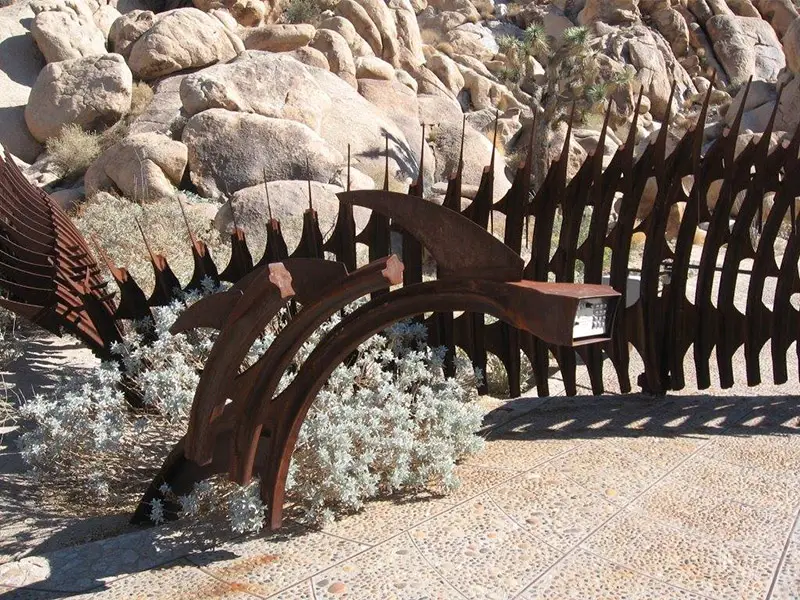



A freestanding bronze sink outside the master bath serves as a functional sculpture and epitomizes the organic fluidity found throughout the home.



Pebble water basins and countertops inlaid with shells and starfish are more examples of incorporating nature into the home.

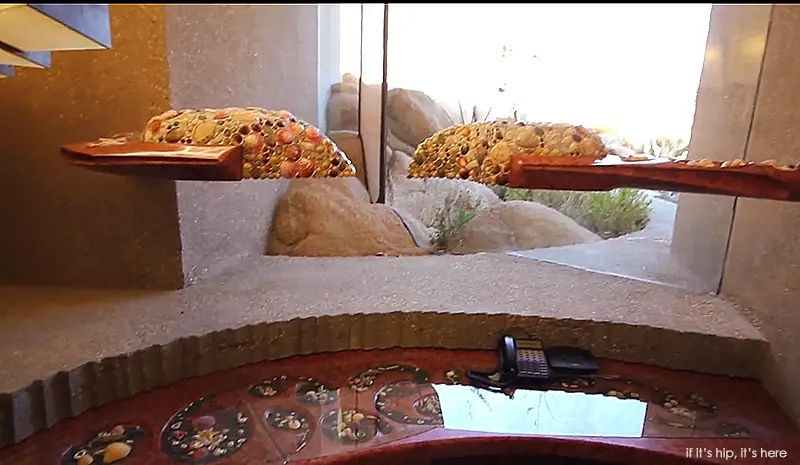

Palm Springs Life reports that “The house is full of one-of-a-kind objects, all handmade by Vugrin — a quiet, unpresuming man who trained originally as an artist and has been working with Kellogg since Vugrin was a teenager. Vugrin has spent much of two decades carving Honduras mahogany, bending metal, and carving granite and marble. In one bathroom, a rosy marble sink originates in the ceiling and moves diagonally to the height where we can wash our hands. In the small dining room, he has designed and executed a kind of glass parasol over the room, using 800 pieces of sandblasted glass. The perimeter fence is also a work of art, consisting of vertical strips of steel with dangerous-looking scalloped edges.”



The same scalloped edges also adorn the front door, a combination of sandblasted glass and metal. Kellogg says he likes the natural rust color of the metal. “I’m a purist,” he says.
The Doolittles say they are selling because, in Jay’s words, “We’re getting older. It’s getting harder getting up and down the steps.” Finding a new owner may require a global marketing effort. Doolittle says not everyone will be able to appreciate the house. “Yet the house, much of which is finished in natural, local stone and stone aggregate, feels like an extension of the desert, and vice versa,” he adds. “This strong sense of landscape makes the house accessible and easy to understand. If some Native Americans from 500 years ago showed up here,” says the owner, “they would feel right at home.”
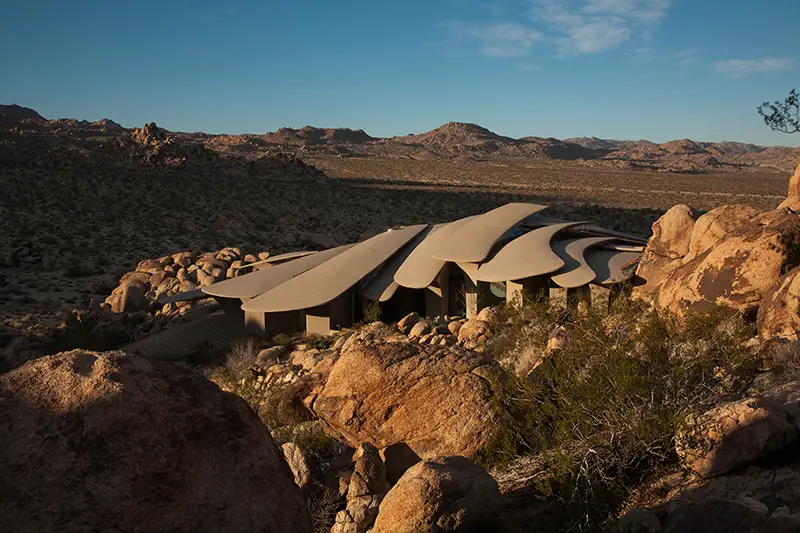

If you are interested in viewing or purchasing the home, it is represented by TTK
images marked with ‘if it’s hip, it’s here’ were screen grabs taken from the video, sharpened and cropped by IIHIH. photography by © Lance Gerber for nuvue interactive llc and Millicent Harvey for Palm Springs Life
